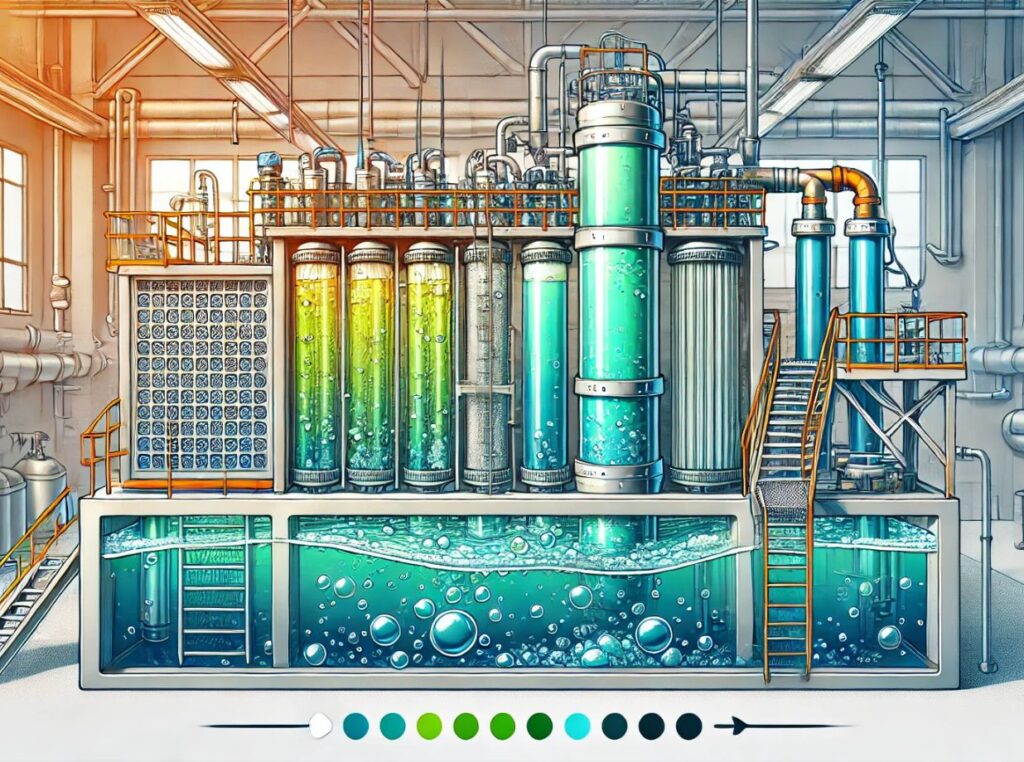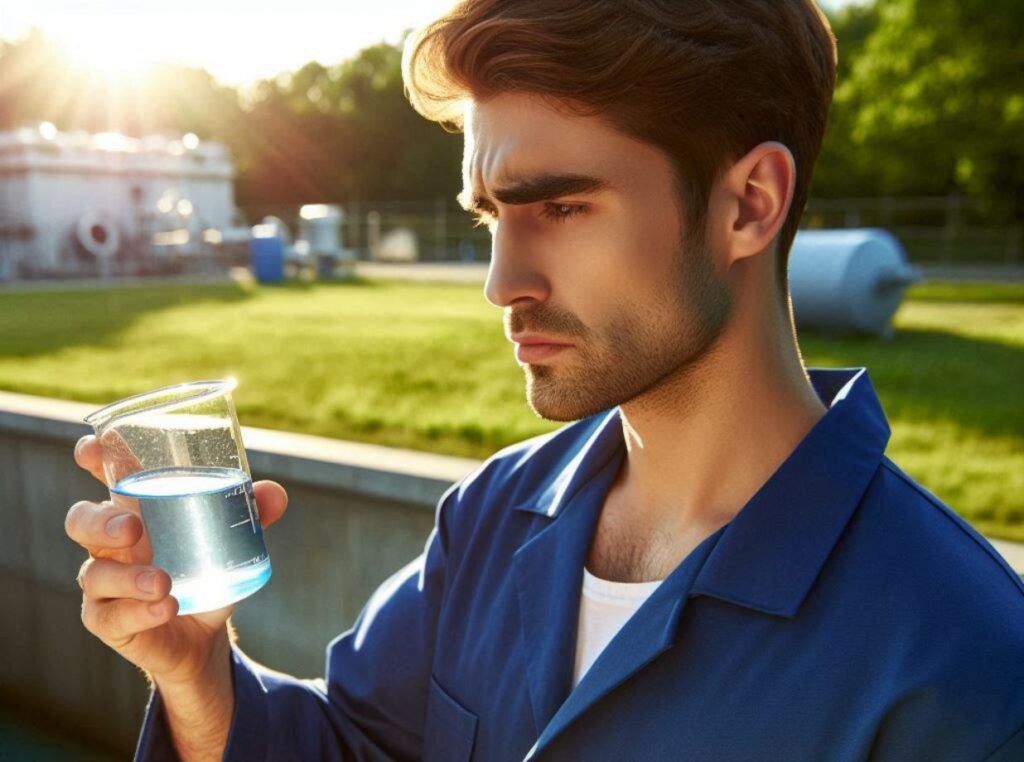
Membrane bioreactors (MBRs) have emerged as a groundbreaking technology in the field of wastewater treatment, combining the best of biological processes and membrane filtration. This innovative approach has revolutionized the way we purify water, offering a more efficient and effective solution to the growing global water crisis. MBRs utilize a unique system that integrates a suspended growth biological reactor with membrane filtration, allowing for the separation of treated water from mixed liquor.
The core principle behind MBRs lies in their ability to replace the traditional secondary clarification and tertiary filtration steps with a single membrane filtration process. This integration not only simplifies the treatment process but also significantly enhances the quality of the effluent. As water scarcity becomes an increasingly pressing issue worldwide, the adoption of MBR technology represents a crucial step towards sustainable water management and resource conservation.
Key Takeaways
- Membrane bioreactors offer a more efficient and effective way to treat wastewater, revolutionizing the industry with their advanced technology.
- The advantages of membrane bioreactors in wastewater treatment include higher quality effluent, smaller footprint, and the ability to handle high organic loads.
- Membrane bioreactors are revolutionizing wastewater treatment by providing a more sustainable and environmentally friendly solution, reducing the need for chemicals and producing reusable water.
- Membrane bioreactors play a crucial role in sustainable water management by helping to conserve water resources and reduce pollution in the environment.
- While there are challenges in implementing membrane bioreactors, successful case studies demonstrate their effectiveness and potential for widespread adoption in the future.
Advantages of Membrane Bioreactors in Wastewater Treatment
Membrane bioreactors offer a multitude of advantages over conventional wastewater treatment methods. One of the most significant benefits is the superior quality of the treated effluent. MBRs can produce water that meets or exceeds stringent regulatory standards, making it suitable for various reuse applications.
This high-quality output is achieved through the use of ultrafiltration or microfiltration membranes, which effectively remove suspended solids, bacteria, and even some viruses from the treated water. Another key advantage of MBRs is their compact footprint. The integration of biological treatment and membrane filtration in a single unit allows for a significant reduction in the overall plant size compared to traditional treatment facilities.
This space-saving feature makes MBRs particularly attractive for urban areas with limited land availability or for upgrading existing plants without expanding their physical footprint. Additionally, MBRs offer greater operational flexibility, as they can handle fluctuations in influent quality and quantity more effectively than conventional systems, ensuring consistent performance even under varying conditions.
How Membrane Bioreactors are Revolutionizing Wastewater Treatment
Membrane bioreactors are transforming the wastewater treatment landscape by addressing many of the limitations associated with conventional treatment methods. One of the most significant ways MBRs are revolutionizing the field is through their ability to produce high-quality effluent that can be directly reused or safely discharged into sensitive environments. This capability is particularly crucial in regions facing water scarcity, as it allows for the implementation of water reuse strategies that can help alleviate pressure on freshwater resources.
Furthermore, MBRs are driving innovation in decentralized wastewater treatment solutions. Their compact size and modular nature make them ideal for small-scale applications, such as individual buildings or communities. This decentralization approach can reduce the need for extensive sewer networks and large centralized treatment plants, leading to more sustainable and resilient water management systems.
By enabling localized treatment and reuse, MBRs are paving the way for a more circular approach to water management, where wastewater is viewed as a valuable resource rather than a waste product. Click here to learn more about membrane bioreactors
The Role of Membrane Bioreactors in Sustainable Water Management
| Metrics | Data |
|---|---|
| Water Treatment Capacity | Varies based on MBR system size |
| Energy Consumption | Lower compared to conventional treatment methods |
| Footprint | Requires less space compared to conventional treatment plants |
| Effluent Quality | Produces high-quality treated water |
| Sludge Production | Generates less sludge compared to conventional methods |
Membrane bioreactors play a crucial role in advancing sustainable water management practices. By producing high-quality effluent, MBRs facilitate water reuse in various applications, including irrigation, industrial processes, and even indirect potable reuse. This ability to recycle water effectively reduces the demand for freshwater resources, contributing to the conservation of natural water bodies and ecosystems.
Moreover, the energy efficiency of MBRs, particularly in terms of aeration and pumping requirements, helps minimize the carbon footprint associated with wastewater treatment. The implementation of MBRs also supports the concept of the circular economy in water management. By treating wastewater to a high standard, MBRs enable the recovery of valuable resources such as nutrients and energy.
For instance, the concentrated biomass produced in MBRs can be used for biogas generation or as a source of fertilizers. This holistic approach to resource recovery not only improves the overall sustainability of water treatment processes but also creates new opportunities for value creation in the water sector.
Challenges and Opportunities in Implementing Membrane Bioreactors
While membrane bioreactors offer numerous advantages, their implementation is not without challenges. One of the primary obstacles is the higher initial capital cost compared to conventional treatment systems. The specialized membranes and associated equipment can significantly increase the upfront investment required for MBR installations.
Additionally, membrane fouling remains a persistent issue that can impact system performance and increase operational costs. Addressing these challenges requires ongoing research and development to improve membrane materials and optimize operational strategies. Despite these challenges, the opportunities presented by MBR technology are substantial.
The growing demand for water reuse and the increasing stringency of effluent quality regulations are driving the adoption of MBRs worldwide. This trend is creating new markets for MBR technology and spurring innovation in membrane design and system integration. Furthermore, the potential for resource recovery from wastewater treatment processes is opening up new avenues for value creation, making MBRs an attractive option for municipalities and industries alike.
As the technology continues to mature and costs decrease, the widespread implementation of MBRs is poised to play a pivotal role in addressing global water challenges.

Case Studies of Successful Implementation of Membrane Bioreactors
Numerous case studies from around the world demonstrate the successful implementation of membrane bioreactors in various settings. One notable example is the Changi Water Reclamation Plant in Singapore, which utilizes MBR technology as part of its advanced water treatment process. This facility plays a crucial role in Singapore’s water security strategy, producing high-quality reclaimed water that meets drinking water standards.
The plant’s success has made it a model for other water-scarce regions looking to implement sustainable water management solutions. Another compelling case study is the Nordkanal MBR plant in Germany, one of the largest MBR facilities in Europe. This plant has demonstrated the scalability of MBR technology, treating wastewater from multiple municipalities with exceptional efficiency.
The high-quality effluent produced by the plant has enabled direct discharge into a sensitive receiving water body, showcasing the environmental benefits of MBR technology. These case studies, among many others, highlight the versatility and effectiveness of MBRs in addressing diverse wastewater treatment challenges across different geographical and regulatory contexts.
Future Trends and Innovations in Membrane Bioreactors for Wastewater Treatment
The future of membrane bioreactor technology looks promising, with several exciting trends and innovations on the horizon. One area of focus is the development of novel membrane materials that offer improved performance and resistance to fouling. Research into nanocomposite membranes and biomimetic materials is paving the way for more efficient and durable MBR systems.
Additionally, the integration of advanced process control and artificial intelligence is expected to optimize MBR operations, leading to enhanced performance and reduced energy consumption. Another significant trend is the increasing focus on resource recovery from wastewater. Future MBR systems are likely to incorporate technologies for extracting valuable resources such as nutrients, energy, and even rare metals from wastewater streams.
This holistic approach to wastewater treatment aligns with the principles of the circular economy and has the potential to transform wastewater treatment plants into resource recovery facilities. As these innovations continue to evolve, membrane bioreactors are set to play an even more crucial role in addressing global water challenges and promoting sustainable water management practices.
FAQs
What is a membrane bioreactor (MBR) and how does it work in wastewater treatment?
A membrane bioreactor (MBR) is a wastewater treatment process that combines a biological treatment process using microorganisms with a membrane filtration process. The microorganisms break down organic matter in the wastewater, while the membrane acts as a physical barrier to separate the treated water from the solids.
What are the advantages of using membrane bioreactors in wastewater treatment?
Some advantages of using membrane bioreactors in wastewater treatment include higher treatment efficiency, smaller footprint, better water quality, and the ability to produce reusable water. MBRs also have the potential to reduce the need for additional treatment processes and produce less sludge.
How are membrane bioreactors revolutionizing wastewater treatment?
Membrane bioreactors are revolutionizing wastewater treatment by providing a more efficient and effective way to treat wastewater. They offer higher treatment quality, reduced footprint, and the ability to produce reusable water, making them a more sustainable and cost-effective solution for wastewater treatment.
What role do membrane bioreactors play in sustainable water management?
Membrane bioreactors play a crucial role in sustainable water management by providing a more efficient and environmentally friendly way to treat wastewater. They help in conserving water resources, reducing pollution, and promoting the reuse of treated water for various purposes.
What are the challenges and opportunities in implementing membrane bioreactors?
Challenges in implementing membrane bioreactors include high initial investment costs, membrane fouling, and the need for skilled operation and maintenance. However, opportunities lie in the potential for technological advancements, cost reductions, and the increasing demand for sustainable wastewater treatment solutions.
Can you provide some case studies of successful implementation of membrane bioreactors?
Some successful case studies of membrane bioreactor implementation include the Orange County Groundwater Replenishment System in California, the Thames Water Beckton Sewage Treatment Works in the UK, and the Changi Water Reclamation Plant in Singapore. These projects have demonstrated the effectiveness and reliability of MBR technology in wastewater treatment.
What are the future trends and innovations in membrane bioreactors for wastewater treatment?
Future trends and innovations in membrane bioreactors for wastewater treatment include the development of more advanced membrane materials, improved energy efficiency, and the integration of MBRs with other treatment processes such as advanced oxidation and nutrient removal. Additionally, there is a growing focus on decentralized MBR systems and the use of MBRs in water reuse applications.